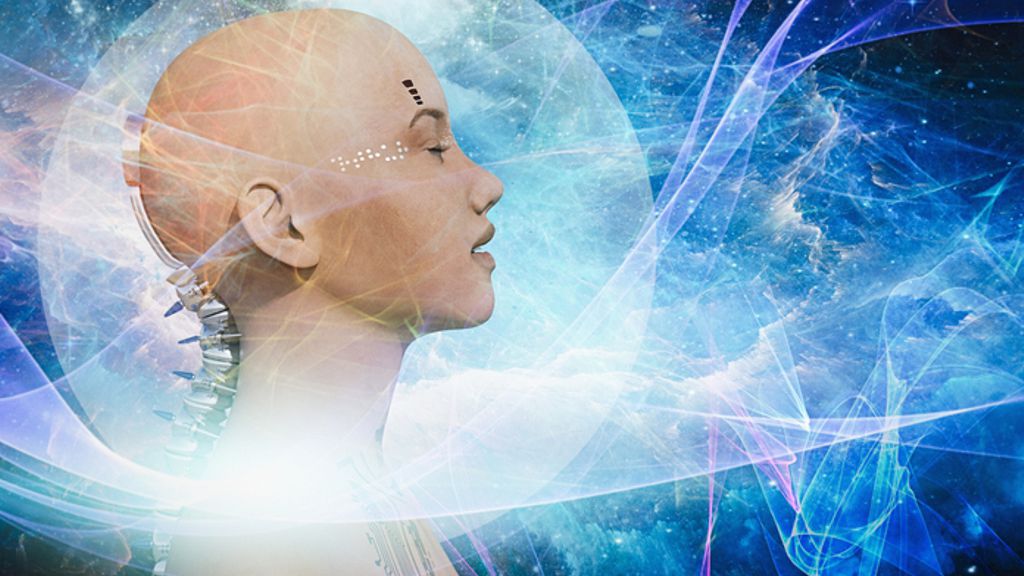
A review of “Spirit Tech: The Brave New World of Consciousness Hacking and Enlightenment Engineering”
Progress comes at you fast. First there was TV, then LSD, and now the Pope is praying for the beneficial power of artificial intelligence. For tech-savvy believers on the move, Facebook currently offers a “pray” button to soothe souls in despair. So it comes as no surprise that people are zapping their brains to see God.
Despite the aura of ancient tradition, all cultural modes have evolved over time. Therefore, it should feel natural to see new technologies that augment, transform, and maybe even replace the more ancient patterns. Nevertheless, the inventions presented in Spirit Tech (St. Martin’s Press, 2021) rattle the soul.
Written by Wesley Wildman and Kate Stockly, the book offers a dizzying panorama of transcranial brain stimulation, neurofeedback devices, digitized community, sacralized virtual reality, psychedelic rituals, and AI-powered gurus. As specialists in the scientific study of religion— Wildman and Stockly explore this techno revolution in elegant detail.
While their conclusion is overwhelmingly optimistic, the authors are careful to point out potential dangers to both the individual and the wider social structure. Their ultimate purpose is to inform the world about the future, not to advertise it.
Personally, I suspect these technologies are an ominous sign of things to come. Can you imagine a congregation dotted with sleek, three-hundred dollar God-helmets? It’s absurd.
That’s not to say I don’t want to try all of them, though. In fact, I’ve done a few more than once.
Shocking the Soul’s Machinery
From the outset, Wildman and Stockly take a naturalistic approach to religious phenomena, whether cultural or biological. Nature is sufficient unto Herself to produce gods and men. In nearly every case, then, the artificial religious experiences they discuss center on the brain and its manipulation. Of course, some methods are more direct than others.
After decades of development, transcranial stimulation has finally come into its own. It can be used to agitate a subject or create the illusion of ghostly presences. It can also be used to induce contentment.
Buddhist practitioners spend decades of their lives cultivating that inner stillness. Their goal is to heighten intention and eliminate desire—to achieve nirvana—through arduous meditative practices. According to Shinzen Young and Jay Sanguinetti, founders of the SEMA Lab at the University of Arizona, the same equanimity can be achieved through transcranial focused ultrasound stimulation.
The primary targets are the posterior cingulate cortex and the basal ganglia. After fifty years of diligent meditation, Shinzen Young claims that transcranial ultrasound stimulation put him in one of the deepest states he’s ever experienced. “[It] felt like a deep remembering of what he really was,” write Wildman and Stockly, “his true self; and what mediation, mindfulness, and the Buddhist path are all about.” If the technology is as promising as it sounds, a novice might be brought to the edge of enlightenment with the push of a button—at least momentarily.
To their credit, Young and Sanguinetti are keeping their work out of the hands of Silicon Valley investors. That is, until the safety and ethics are worked out. But it’s only a matter of time, I imagine, before some version of their invention is available on Amazon. Various counterparts, like the the Zendo headset, are already out on the market.
Donning the God Goggles
Virtual reality is a more content-specific form of spirit tech. At present, most people strap on the goggles to shoot zombies or slice flying pieces of fruit. But since its earliest days, VR has promised direct experience of fully realized parallel dimensions. Long-term immersion can be so intense, some users slip into depression upon returning to their drab corporeal existence.
By Joe Allen
Read Full Article on Salvo.mag.com






